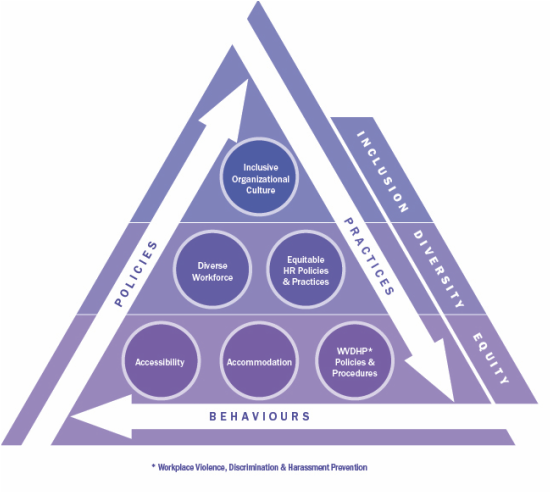|
These days more and more organizations are talking about Diversity and Inclusion. They publicly state a commitment to creating a diverse workforce and inclusive organizational culture. They may develop a strategy to implement various activities intending to move them closer to meeting this ideal. While this is commendable, we continue to see evidence that many employers haven't yet mastered Human Rights 101 ... which leaves us to wonder how do you get to Diversity and Inclusion without mastering human rights? We run across countless examples of potential human rights violations in the hiring process. There are managers, organizations and even HR professionals that include an assessment of "fit", review the job candidate's social profile (e.g., Facebook, Twitter, etc.), and conduct personality testing when hiring. All of which can lead to limited hiring of candidates from diverse communities, backgrounds, and identities and can also lead to successful human rights complaints. There are also managers who insist on asking interview questions that do not assess the job candidates' ability to do the job. One recent example made the news when a student was shocked that she was asked about her hijab and personal life in a job interview. Once hired, there are workplaces in which employees are refused accommodation based on disability, religion and family status -- often because managers don't know their legal obligations under human rights legislation. There are also workplaces in which harassment occurs and is allowed to continue even when the manager is aware of the inappropriate behaviours. In all our work, we continue to insist that an inclusive organization needs to be built on a firm human rights foundation -- this means complying with accessibility, accommodation, and workplace violence, discrimination and harassment prevention standards. This includes training all managers and employees, providing ongoing education, ensuring policies and practices are discrimination-free, and having a good process to investigate and resolve complaints when they do arise.
It is clear that not all employers, large or small, are on the same page -- or in the same chapter -- when it comes to Diversity and Inclusion. Even within the same organization we see some managers implementing cutting edge approaches to hiring and managing employees, while also seeing some managers with who insist on hiring in their image and resist any organizational effort to diversify the workforce. When we see these contradictions within the organization, it is clear that the organization's vision, policies, processes and behaviours are not aligned and not grounded in human rights. Without this foundation, the organization is building a house of cards. Even with a strong stated commitment to Diversity and Inclusion, the organization will breed cynicism if employees come to work and experience harassment on a daily basis, see that managers only mentor employees who look like them, or that they only hire employees who "fit". Organizations also need to consider the damage that one human rights complaint can make to its public image of being an "inclusive" employer. It only takes one very public complaint for this carefully crafted reputation to be left in tatters. While aspirational statements are needed to lead the organization on its journey of Diversity and Inclusion, the real work of creating a diverse workforce and inclusive working environment begins from the ground up -- embedded in a strong foundation of compliance with human rights legislation.
0 Comments
Your comment will be posted after it is approved.
Leave a Reply. |
TANA TURNERTana Turner is Principal of Turner Consulting Group Inc. She has over 30+ years of experience in the area of equity, diversity and inclusion. Categories
All
|

